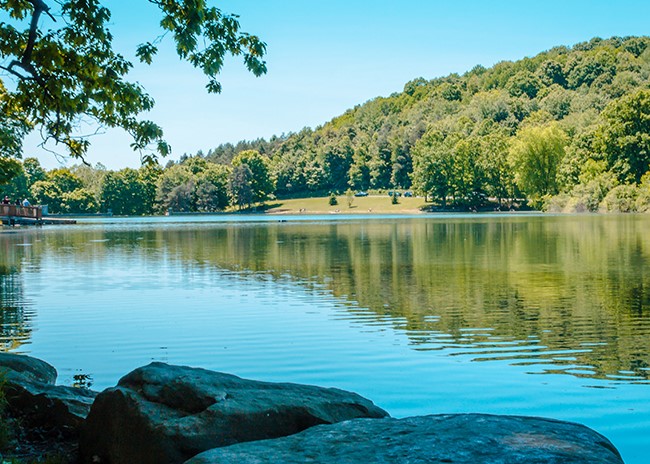Helping Those Most in Need
As we enter the 'holiday season,' I encourage you to reflect on how you can make a positive difference in the lives of those who need support beyond current levels and how you might guide them so they can continue to help themselves and their families.
To understand the challenges that families with limited resources are facing, please take some time to read this article, which shows that our 'safety net' in Indiana currently ranks 44th in the US, the lowest we have ranked since data collection started.
In addition, you can always reference the excellent ALICE research (and the data provided at the county level) by the United Way and poverty-related issues for children at the Indiana Youth Institute Data Hub.
So this begs the question, what can we do about this issue?
The Purdue Extension Health and Human Sciences team conducts family finance and food security programs. Now is a great time to check in with your Purdue Extension office to learn more. Purdue Extension's Grass to Garden program is certainly relevant from a food security perspective. Also, Purdue Extension Community Development has developed surveys and focus group protocols (surveys are in English and Spanish) that can help communities develop a baseline understanding of their food security situation.
FORWARD and Work Ready help on the workforce development front. Employer of Choice, Remote Work, Digital Ready Business, and (the forthcoming) Experience Incubator programs help create and sustain business and employment opportunities.
Health and wellness are crucial issues for our community members who have limited resources, and our I-HOPE and TASC programs address critical aspects of health equity and substance use disorder.
Lastly, households with limited resources often lack a voice in their community and beyond. I think all of our Leadership and Civic Engagement programs can serve as a means of empowering and lifting their voice up.
Another aspect of lifting people's voices is making sure they are known and seen. People who are facing significant housing issues, such as homelessness, are often unseen – especially in our rural areas. In the following, Elisa Worland, a Purdue Extension educator in Wayne County, provides numerous ways that you can get involved in addressing homelessness in your community. She wrote:
"Each year HUD conducts a Homeless Point-in-Time (PIT) Count, a census of individuals experiencing homelessness during a 24-hour period. This census occurs across the nation, and HUD and IHCDA use this to make decisions about funding allocations and strategic priorities around housing and homelessness. Across the United States, many rural counties have no idea this is happening or don't participate in the count because they don't understand why it is essential. It has been a struggle to engage rural communities effectively, and homelessness does look different in rural areas compared to urban areas. Community organizations are well-positioned to support the count and assist communities in conducting it. This year, the PIT Count will be on Wednesday, January 24th, 2024.
How can you get involved?
IHCDA has two Continuums of Care- the Indianapolis Continuum of Care, and the Indiana Balance of State (everyone who is not Indy). The Balance of State is composed of 16 regional planning councils. For each region, there is a PIT Coordinator. You can find your region's information here- https://www.in.gov/ihcda/indiana-balance-of-state-continuum-of-care/regional-structure/. For example, Wayne County is part of Region 9, which includes Rush, Franklin, Union, and Fayette counties.
Contact your PIT Coordinator to find out what efforts are currently in place and how you can assist. Ask if there is a group organizing the count in your county. If there isn't, you could start one. If you aren't sure if your county has participated historically, you can look at the data from the 2023 count - https://www.in.gov/ihcda/indiana-balance-of-state-continuum-of-care/hmis_data_portal/. Data from previous years is housed here too.
The 2024 PIT Volunteer Webinar will be held on Thursday, January 11th, 2024, at PM EST. You can register here.
What are some ways you can assist?
- Start a PIT Count team if one does not exist in your county.
- Our PIT Coordinator used to organize this by herself in our county, and it was really overwhelming. We now have a small core team that divides up the tasks of volunteer recruitment, soliciting donations, vendor recruitment for our outreach event, marketing, and others. We usually start meeting a few months before the count, and we also have a debrief meeting afterward to discuss what went well and what we could do better.
- Organize a donation drive.
- Locally, we provide backpacks filled with hygiene items, hand/foot warmers, snacks, and other handy items to provide to those we survey. We all try to get the same types of backpacks because then we can identify from a distance whether someone has been surveyed already.
- Host an outreach event.
- We partner with a local church to provide a hot meal, resource fair, and clothing items. We did a summer event, and more than 80 people showed up. It is much easier to survey people if you can get them to come to you rather than you going to them.
- Do street outreach.
- Libraries, McDonald's, parks, and shelters are good places to look for folks. Practice the buddy system- find a colleague or friend to assist with administering surveys. You can really bond with someone at 7 am stomping around the river looking for encampments!
- Recruit other organizations to assist.
- Our mental health providers and nonprofits have been fabulous partners in this. One of our clinics loves doing these events because they can provide vaccinations and health screens. This year, we might have a beauty college attending to provide free haircuts to participants.
- Recruit volunteers.
- Colleges, especially human services students, make great volunteers. Some businesses give their employees opportunities to do volunteer work during company time. We brief our volunteers on the survey and what resources are available in the community before they assist on the day of the event.
- Share information about the count.
- Many of our government officials, nonprofits, food pantries, etc., are unaware of this count. Providing information can help kick-start an initiative. We have a draft presentation that can be shared to provide as an example.
Wayne County has come a long way, setting an excellent example for other counties. Now, you can replicate these best practices in your community. Thank you, Elisa!
If you want to learn more, please email the Purdue Extension Community Development Program (CDExtension@purdue.edu). Please leave your name, email/phone, city/county, and questions and comments, and we will follow up.
From the entire Purdue Extension Community Development family to yours, have a safe and healthy winter break, and may the new year bring new opportunities to help your community in impactful ways.





